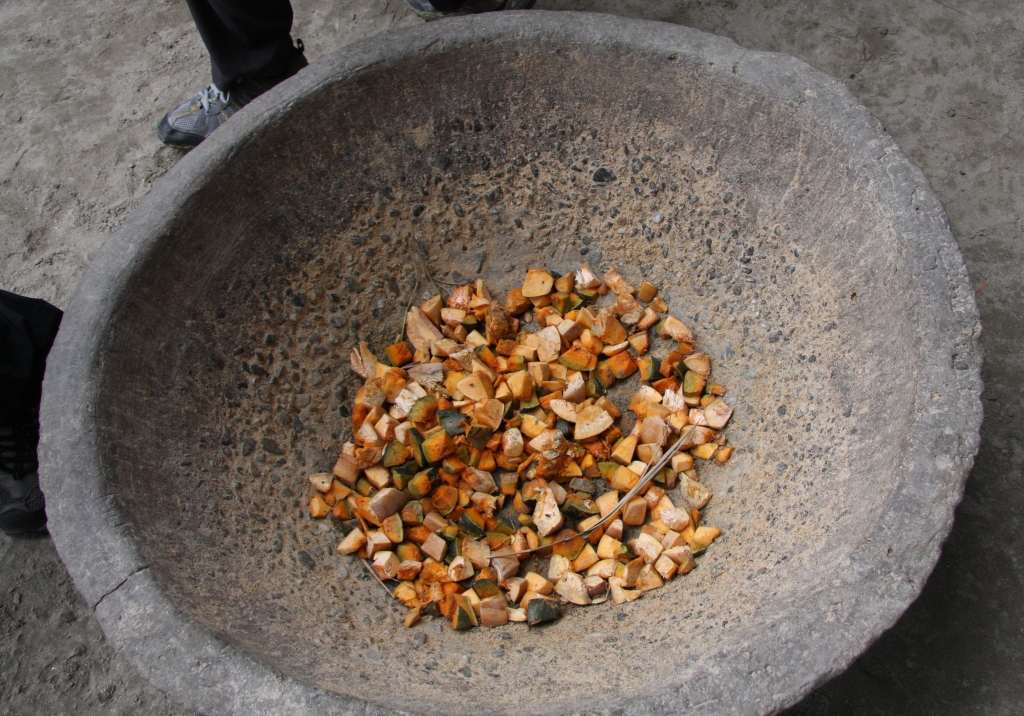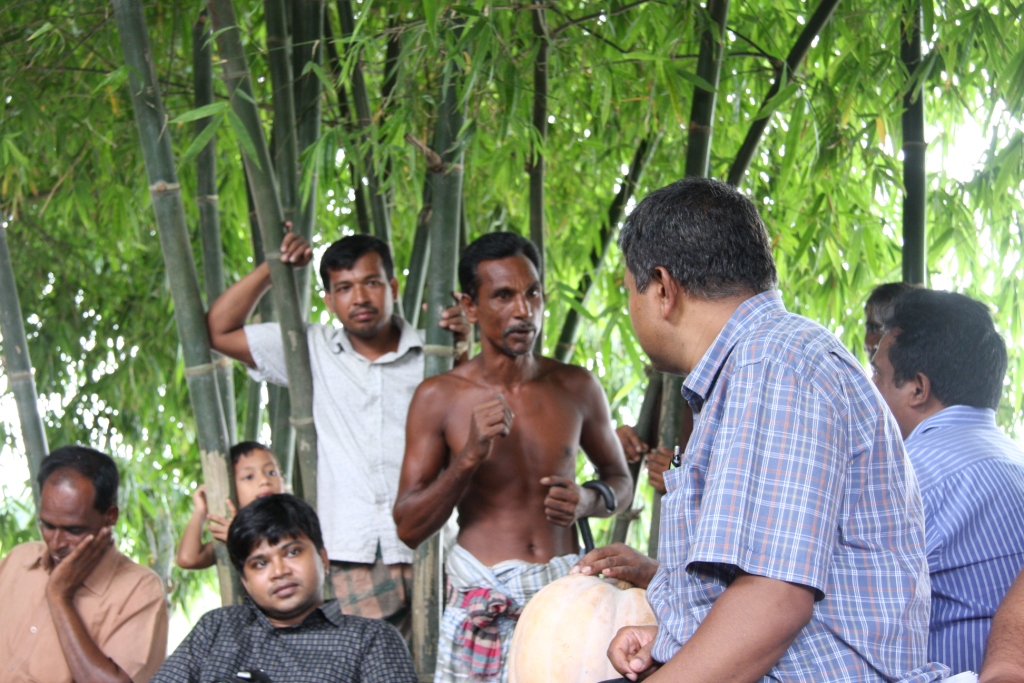By Md Abu Syed, PhD Fellow, BCAS
Uttar Khoribari is a remote village along the river Teesta. It lies in Dimla union, Nilphamari Upazilla, in Rangpur District of Bangladesh. The village makes for a scenic locale, with its green fields, mud roads and proximity to the Teesta and its several channels-although they are gradually drying. But that scenic beauty masks the realities of the villagers’ struggles to make a livelihood.
Earlier, the village used to get inundated by flood waters for as long as up to six months, but the people at least had enough resources to earn a decent livelihood. During the monsoon season people used to catch fish in the rivers and in the dry season they cultivated their fields. In the last seven to eight years, however, the village has not been getting inundated for as long, during and after the rainy season, and the villagers are thus struggling to make ends meet. And recently, riverbank erosion in other areas along the Teesta has forced many families to migrate to Uttar Khoribari from other places, putting a strain on the already meager resources. Furthermore, in recent times, the formation of new small islands and increasing sand deposition are hampering the crop production in the village during the dry season, and the reduction in fish numbers due to the insufficient flow of waterways is impacting the livelihood of the people during the monsoon.
 Pumpkins: assets or a burden? |
About 350-400 families have moved to the embankment area in Uttar Khoribari to adapt to this adverse situation and livelihood crisis. The people can now take shelter in the embankment area during a flood, but they do not have any livelihood options to depend on when there is no flooding. To create alternate livelihood options for the people here, NGOs such as JKS have come up with programmes such as Shouhardo and Shiree. Pumpkin cultivation is one of the initiatives that was initiated by JSKS to improve the locals’ livelihood options. |
|
In this venture, JSKS provided pumpkin seeds and other kinds of support to enable the farmers to grow pumpkins. During our visit, we saw that pumpkin harvests were pretty good, meaning we can assume that the sandy soil is good for pumpkin production. But the texture of the soil is sandy and has low water-retention capacity; thus to get good harvests, the farmers have to water the soil more than in other locations. We also learned that in most cases, it was the female members of the family who were responsible for watering the plants, and because that work is a labour-intensive task, many of them routinely fall ill. |
 Pumpkin seeds. Pumpkin seeds. |
The harvests, however, have been really good and the farmers are thus hopeful that pumpkin farming might provide a way out for them.
 A struggling pumpkin farmer tells his story. |
But there are many marketing challenges they have to overcome. To start with, they do not have a cost-efficient supply chain for getting their produce to the market. Almost every household now has a stock of 250-300 pumpkins, but the lack of proper communication facilities here and lack of proper knowledge on the marketing and value-chain management systems on the part of the villagers have hampered their businesses. In fact, hundreds of farmers routinely throw their pumpkins into the Teesta or are forced to use the vegetables as fodder because of the |
unforeseen gap between the planning in pumpkin farming and the marketing of the produced stock. Even the cows in the village have now stopped consuming pumpkin as fodder.
Many of the marginalised and poor families here had invested their last savings when they saw that the land produced good pumpkin harvests. But in the end, because they cannot sell their pumpkins, they still remain poor. It’s not that there is no demand for pumpkins: in Dhaka City, a one kg slice of pumpkin fetches around BDT 40, but because the farmers do not have a good supply-chain network, they are now giving away their pumpkins free of cost to people who visit the village—just to free themselves of this “curse”, as they put it. All their efforts and hopes have been in vain only because of the lack of foresight and planning.
Pumpkin farming could be a potential livelihood alternative for the villagers because the sand deposition in the area is changing the soil’s texture. According to the farmers, the soil’s texture right now is not fertile enough to grow the agricultural products they used to produce earlier, but this soil has proved to be fertile ground for pumpkin production.
The HI-AWARE project could thus promote pumpkin farming as an alternative livelihood for the area. However, we should definitely keep in mind the lessons learned so far when we plan our initiative. Furthermore, only proposing an alternative livelihood option will not help the local people improve their livelihood. There should be an effective means of promoting the new livelihood option and converting it into a successful initiative.
